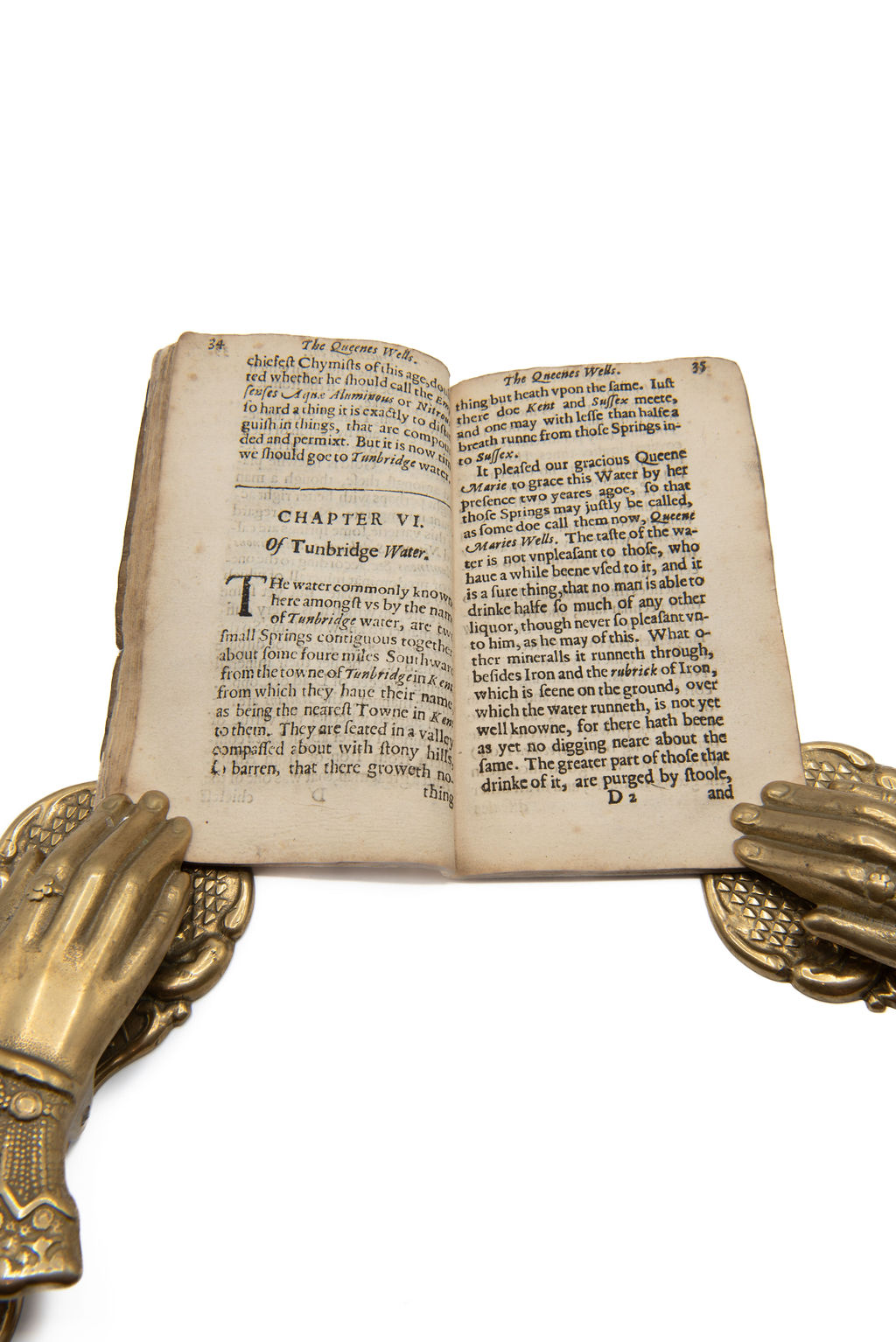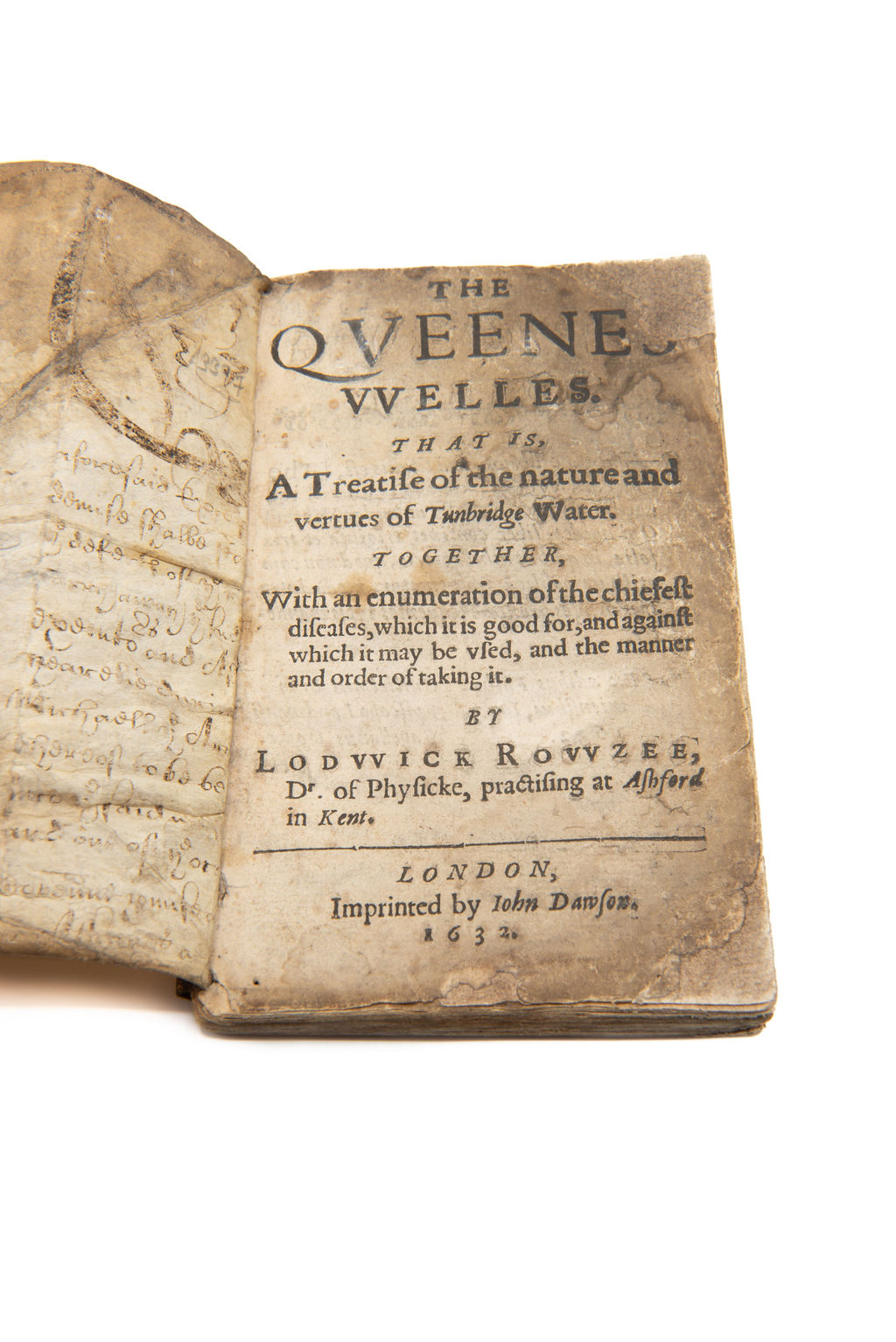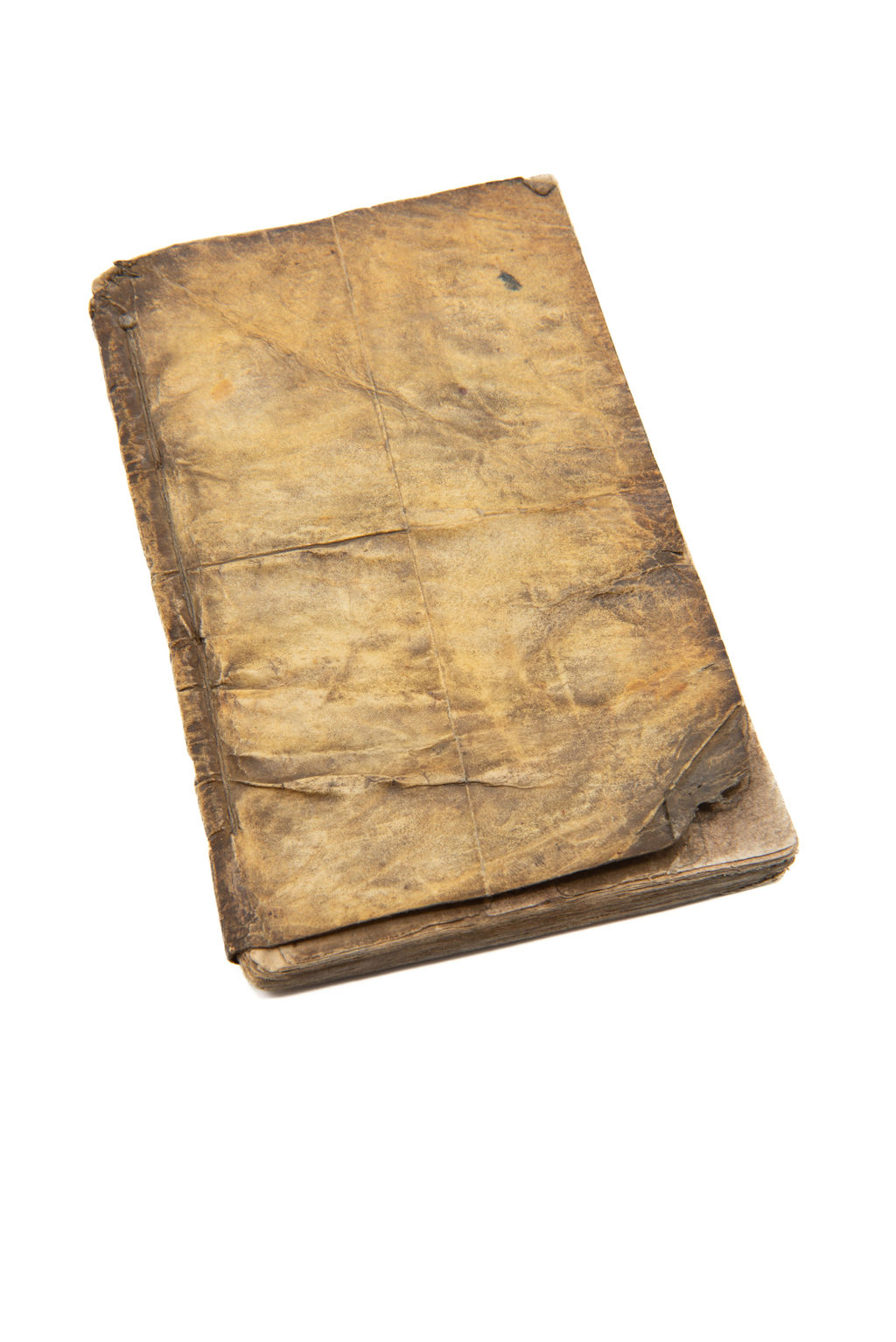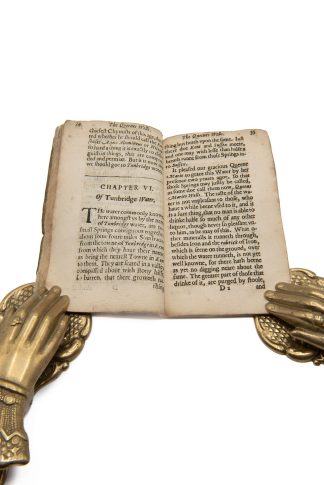ROWZEE, Lodwick
THE VIRTUES OF SPA WATERS
The Queenes Welles. That is, a Treatise of the Nature and Vertues of Tunbridge Water
London, Imprinted by Iohn Dawson, 1632£2,950.00
FIRST EDITION. 8vo. pp. [viii], 79, [i]. A⁴ B-F⁸. Roman letter, some Italic. Woodcut initials, typographical ornaments, small label ‘G.O.M.’ on front pastedown, autograph crossed out on verso of A2, possibly ‘Dr .. Bale anno domii 1661’. Age yellowing, title and outer corners of first and last few leaves soiled, repairs with loss of part of the S in ‘Queenes’ on title, occasional minor, mostly marginal waterstains, the odd mark. A good copy entirely unsophisticated stab bound in a contemporary limp vellum manuscript indenture, text on inside covers, a little soiled, in cloth solander box.
Extremely rare first edition on Rowzee’s book on the curative powers of mineral water and the Chalybeate spring. In 1629 the first royal visitor to the ‘Wells’ was Queen Henrietta Maria, wife of King Charles I, who stayed for six weeks. As there was no accommodation available at that time, the Royal entourage camped on the Common. It was not until the latter part of the 17th century that the first permanent lodging houses were erected. With the royal seal of approval, Tunbridge Wells quickly became the most fashionable drinking spa near London, since it was much closer than Bath or Buxton. Following the Royal visit, Dr Lodwick Rowzee, a physician from Ashford, published this paper on the medicinal qualities of the spring. He established guidelines for the quantity of water that should be drunk and recommended starting with 2½ pints a day increasing to four times that amount during the course of a visit and reducing the amount when preparing to leave the Wells. Rowzee also recommended walking after taking the water and this became part of the daily ritual. ”The water helpeth also the running of the reines, whether it be Gonorrhea simplex or Venria, … In the behalf of women… there is nothing better against barrennesse, and to make them fruitful”. It was to honour the six-month visit of Queen Henrietta Maria in 1629 that Rowzee coined the name ‘The Queenes Wells’, for “Like the spa waters in Belgium, Tunbridge waters were credited with special efficacy in matters gynaecological, which is exactly why the Queen’s doctors could direct here for treatment to an obscure and uninhabited place where her only accommodation would be a tent” J.G.C.M Fuller, ‘Chalybeate Springs at Tunbridge wells’ in 200 Years of British Hydrogeology’.
“It was perhaps relatively easy to portray the purging waters as medicinal since they had not only an obvious effect but also a distinctive taste. As Jameson remarked, “If they had no bad taste nor smell, the patients would have no confidence in their virtues” The chalybeate waters required a greater insistence on the potential danger, as the Antwerp-born physician, Lewis Rouse, (Rowzee) recognized in 1632. “Many haue falne into diseases, feavers and vnadvisedly and vnprepared to those waters, although there is nothing better for agues, then they are, if they be rightly and advisedly vsed, the body being first prepared and purged.” Rouse’s cautions continued to be influential in Tumbridge Wells, being reproduced first in an exact reprint of 1671 and then stripped of all references to Galen, in an edition of 1725 that purported to be a new work by a living author.” David Harley, ‘A Sword in a Madman’s Hand.’.
A rare and most interesting work.
ESTC S116278. STC 21426In stock





